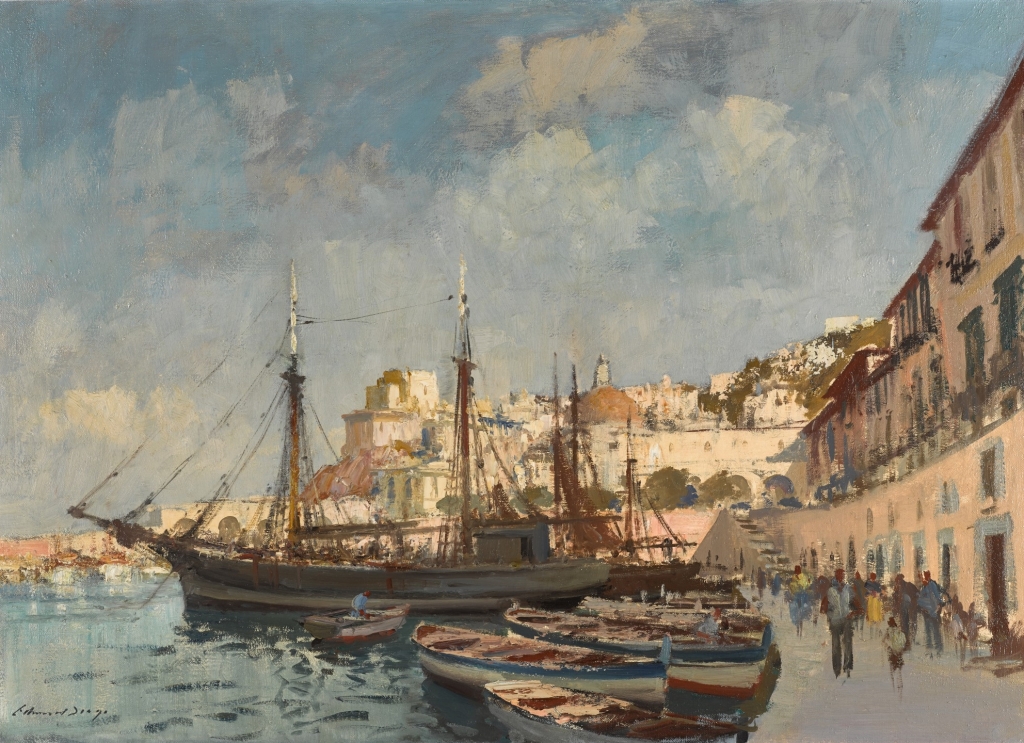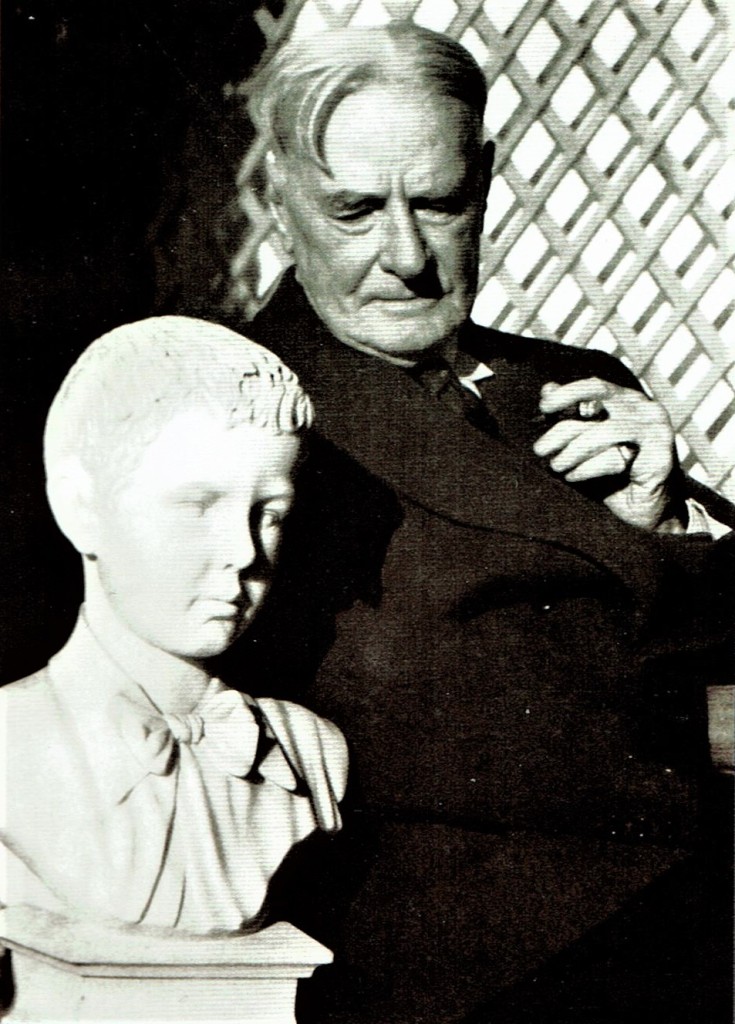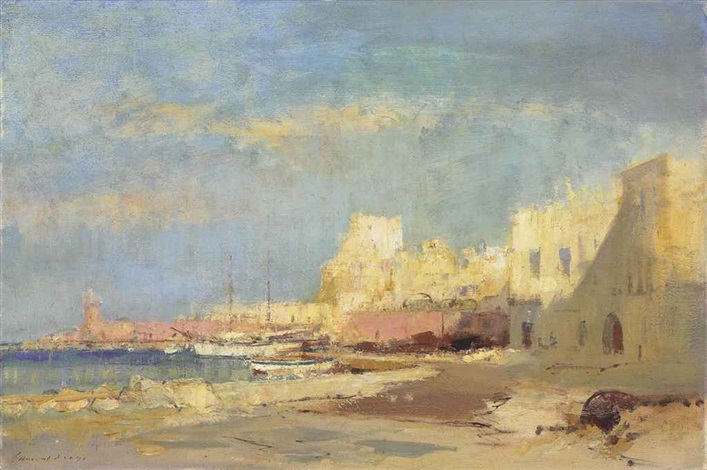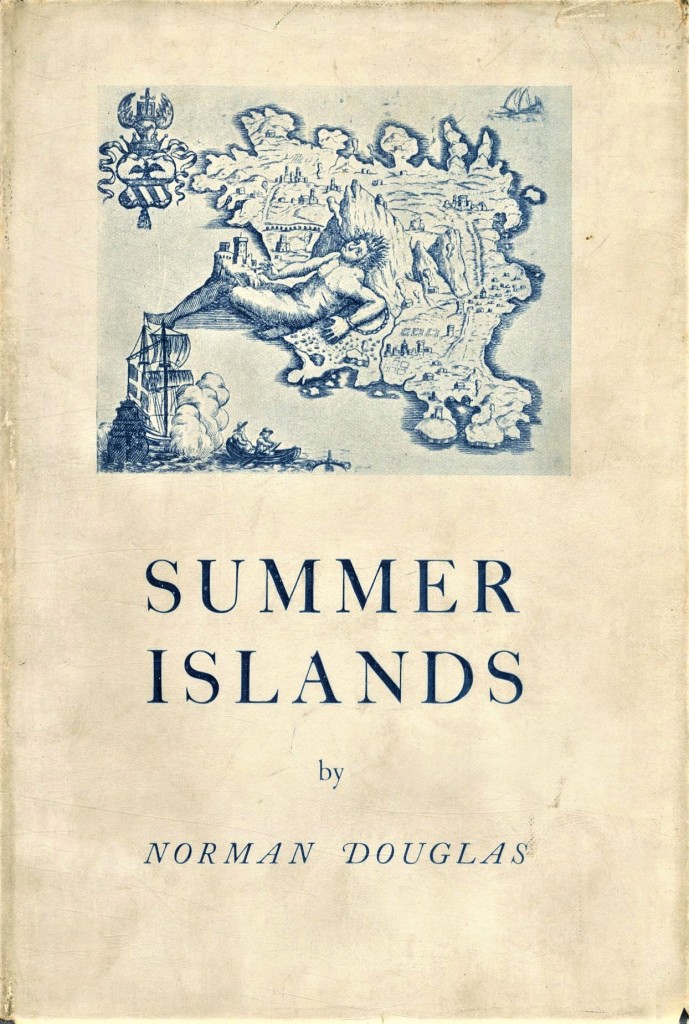
Grove Koger
I’m fascinated by connections and intersections. Few seem meaningful, and yet, having worked for three decades as a reference librarian, I’ve come to suspect that everything is connected, at some level, to everything else. Sometimes we have to go looking, but on other occasions, those intersections drop into our laps.
And on the basis of my fascination, I’d like to talk about three visitors—mythic wanderer Odysseus, British writer Norman Douglas (1868-1952), and British painter Edward Seago (1910-1974)—to the tiny Italian island of Ponza, which lies in the Tyrrhenian Sea off the western coast of Italy near Naples.
Since we know very little about Odysseus, or whether he even existed, anything we might say about him is purely speculative. However, there’s a possibility that Ponza is the island where he and his men encountered the sorceress Circe. There are grottos known as Grotta della Maga Circe (“Cave of the Sorceress Circe”) and Grotta di Ulisse O Del Sangue (“Cave of Ulysses of the Blood”) on the island’s west side, so … why not?
Considerably closer to our own day is Douglas (below), who was once widely known as the author of the 1917 novel South Wind, which describes the goings-on of a number of louche individuals on the imaginary Mediterranean island of Nepenthe. He was also a travel writer, one of the three or four best in the English language, and Nepenthe itself is based loosely on the Italian island of Capri, where Douglas lived for several years. But Nepenthe owes several of its aspects to other Italian islands Douglas was familiar with, including Ponza, Ischia, and Lipari. You can find all four on a map, although of course you’ll look in vain for Nepenthe.

In his little book Summer Islands (1931), Douglas reprinted two articles from the English Review, the second and shorter of which deals with Ponza. As he explains in yet another little book, Late Harvest (1946), he “utilized the geographical features of this group, over-coloured for literary purposes, to describe the cliff-scenery of Nepenthe in South Wind … The minerals mentioned in South Wind are such as occur on Ponza—nearly all of them.”
By the way, Douglas isn’t making a slip when he refers to Ponza as a “group,” as it’s actually the largest of the Pontine Islands archipelago, which includes five other islets, four of them uninhabited. In ancient times, they were known as Πόντιαι, or Pontiae. Douglas calls this section of the book “Islands of Oblivion,” a reference to the fact that they were places of exile during the centuries of the Roman Empire, and explains in an “Author’s Note” that it’s based on a visit he made in July 1908. The little article deals at some length with the islands’ geology—Douglas was a keen amateur geologist—and at one point describes the beauty of Ponza’s highest point, Monte Guardia: “Viewed from the sea … and in the morning light, the whole mountain is suffused with roseate blushes of such intensity as to appear unreal—the fabric of a dream.”
Douglas notes in Late Harvest that “if one is never supremely happy for more than a moment, I was seldom nearer that condition than during those days, not moments, which were spent in July, 1908, on the island-group of Ponza.” However, it seems that Ponza wasn’t really prepared for travelers in 1908: “Life would assuredly be more endurable” on the island, he wrote, “if a hostelry could be found which, by any stretch of imagination, could be regarded as a place of public entertainment. Yet the town is well provisioned, and if future visitors will bring their own cooks and then take private apartments with a kitchen, they may survive indefinitely.”

By the time Edward Seago visited Ponza in 1957-58, the island had made better preparations for travelers, and judging by his paintings, it must have been paradise on earth. Seago had actually visited Italy in the 1930s, and again in the 1940s as “personal war artist” to British Field Marshall Harold Alexander. But in Ponza, he seems to have encountered the full, bewitching beauty of the Mediterranean world for the first time. Perhaps it was Circe’s island after all!
□□□
Speaking of connections, I’ll mention that Douglas’s other summer island is Ischia, an antique map of which appears on the cover of his book. This is the island where British composer William Walton and his wife Susana lived for several decades. You can read my blog about them and about the gardens that Susana created and nourished here.

If you’d like to subscribe to World Enough, enter your email address below:
And if you’ve enjoyed today’s post, please share!